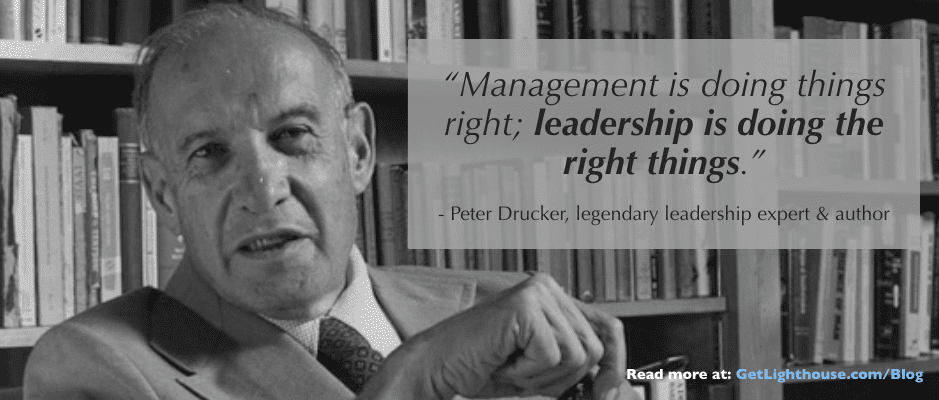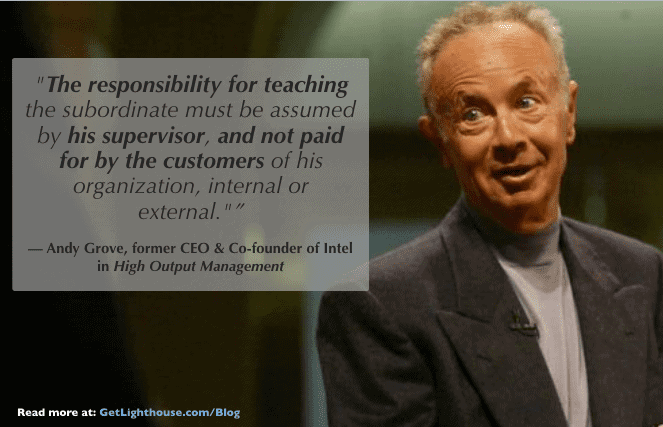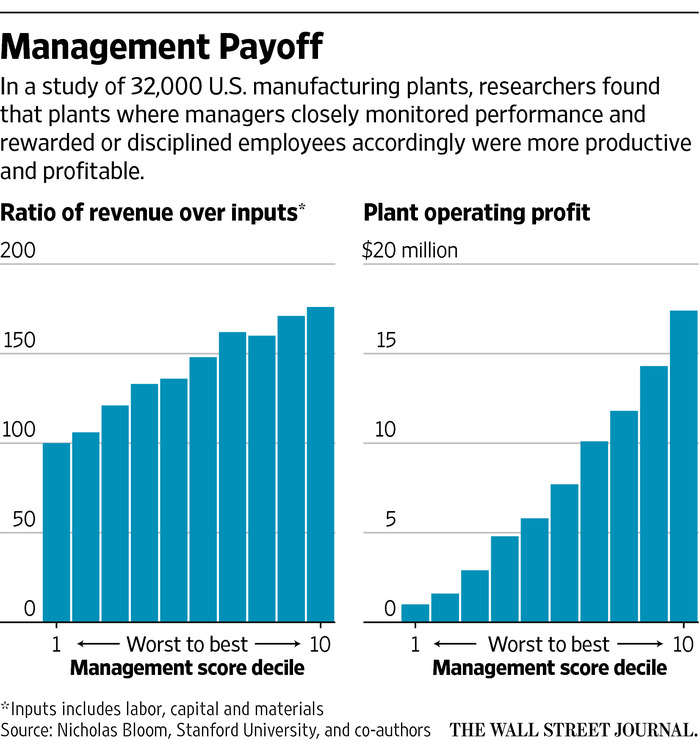"Everybody is identical in their secret unspoken belief that way deep down they are different from everyone else."
- David Foster Wallace
Most companies have some key characteristics that make them believe they're different: a combination of their business model, mission, product, and other factors. But when you look inside these companies, quite a bit about them is the same, too: structure, job titles, common challenges, etc.
Despite the many differences in execution and strategy, most organizational problems in particular are the same across companies.
Looking inward to find management problems in organizations
Research from Chris Zook and James Allen of Bain, (authors of The Founder's Mentality) has shown that 94% of business challenges are internal. When founders and CEOs are asked what their biggest challenge is, they typically fall among this set:
- Turnover
- Productivity
- Process management
- Shipping times/revenue cycles
- Job role design
- People and leadership pipelines
- Relationships with customers
- The need to be more innovative
- Poor Performance Management
Notice, almost all of them are completely under a company's control. However, taken as individual items, this list is pretty daunting. Where do you even begin?
Fortunately, there's actually a relatively simple place to begin to help you solve many of these major organizational problems at once: begin with a focus on improving your managers.

How Bad Management Causes Most of Your Organizational Problems
You can run down the list of all the organizational problems on the minds of senior leaders and see that the fingerprints of managers are all over them.
Over and over, it's the actions (or inaction) of managers that combine to be the hidden, root cause of these major, valid concerns.
Let's take a closer look at them, and one bonus issue that also hurts teams and companies.

1) It all starts with turnover - one of the biggest organizational challenges
It starts with one of the biggest, most painful organizational problems that can plague a company: turnover.
When turnover strikes, unfortunately, the problem is usually misdiagnosed. Multiple studies show that managers falsely attribute employee turnover to either the quality of the job offer or claim the employee wasn't a fit anyway.
The truth shows something quite different.
Most research done directly with employees who recently left their jobs shows that in most cases people leave managers, not companies. This can be because of a direct problem with their manager (50% of Americans have left a job for this reason), or a variety of secondary reasons that are also caused by managers.
Employee turnover is a high cost at every organization, with The Center for American Progress even indicating it costs an organization as much as 213% of the salary to replace highly-trained employees.
Losing good people will cause any leader to lose sleep at night, and bad managers are the biggest reason it happens.
Further reading:
Worried about turnover on your team or with managers who report to you? Start here:

2) Productivity
No one has a bigger impact on team effectiveness than the manager of that team.
According to Gallup's research, managers account for 70% of the variance in employee engagement. This is huge when you consider the relationship between engagement and a variety of benefits:

Meanwhile, research from Evolv and Wharton (UPenn) has shown the absolute largest variance in predicting employee performance is how effective their manager is.
Despite these facts, most employees do not have an effective manager helping them perform at a high level.
Only about 21% of employees feel they're managed in a motivating way, and only 34% of managers can even name the strengths of their employees.
It's hard to be productive if your manager doesn't take advantage of your strengths, nor do the things that make you engaged at work.
Further reading:
What to learn more about boosting productivity and motivating your team? Start here:
- Learn how to motivate your team without breaking the bank
- How to Praise Someone Professionally

3) Process Management
Managers determine the best process for their teams. Whether by building consensus or dictating, the decisions they make determine what and how things get done.
Good managers do this by enabling and empowering the strengths of their team. In First, Break All The Rules, Marcus Buckingham shows through a variety of workplace research that focusing on the strengths of your team is hugely beneficial:
"People who focus on their strengths every day are 6 times more likely to be engaged in their jobs, more productive and more likely to say they have an excellent quality of life.”
Unfortunately, your bad managers do the opposite. They use politics and play favorites to assign work. They add heavy process and bottleneck decision making through them.
This slows down decision-making, product releases, customer issue resolutions, addressing PR/social media postings in times of crisis, and other issues teams tackle every day. Because of this, these bad managers frustrate their teams and hurt the company's reputation, one slow to resolve an issue at a time.
Further reading:
Good managers are thoughtful about processes and the decisions they make with their teams. This starts in two key areas:
- Focusing on priority management, instead of time management
- When making a big change, make sure you work to get buy in from your team this way

4) Making their Numbers
The philosophy, "What's measured is what matters” has many benefits when running an organization; it brings focus, creates clarity for evaluating performance, and can get large organizations moving in one general direction. However, it's far from perfect.
It can reward terrible behaviors that happen to lead to short term gains. Look no further than recent scandals in Silicon Valley, where great numbers led to overlooking increasingly bad behavior.
Another drawback is that it misses tracking and rewarding things like soft skills that are often the root cause of missed targets or success.
For example, a manager that communicates terribly will often have a team that misses targets. The tracking method most companies use will reveal the missed targets, but not the poor communication.
As a result, the poor communication is likely to continue. Only once the missed targets lead to more dramatic changes to the team or manager will things improve.
While a focus on numbers brings many benefits, numbers alone do not tell the whole story. If not investigated, the root causes can be missed and never fixed. This is a key reason why Silicon Valley has so many bad managers.

5) Job Role Design
They're called, "hiring managers" for a reason. The best managers understand what headcount they need, have detailed conversations with their top-of-funnel recruiters (HR) about what they're looking for, and then bring in finalists to interact with the pre-existing team.
The worst managers define the need for headcount around how busy they are (as opposed to which role would add the most value), barely speak to HR, and then complain when the process doesn't unfold as they'd hope.
"Total Motivation” creator Lindsay McGregor has noted that a clear job role can be almost 2x more important than compensation in determining productive motivation among employees once you hire and onboard them.
Teaching your managers to define job roles well scales a solution to this problem. If every team finds good people for the right roles, it's one less organizational problem to worry about.
We talked about the challenges of hiring in this episode of the 'Creating High Performing Teams' podcast:

6) Leadership Pipelines
HR tech analyst and consultant Josh Bersin, formerly of Deloitte, has repeatedly found leadership pipelines to be a top concern of executives. For those companies that invest in addressing this issue, he's found they experience significantly higher long-term revenue per employee and gross profit margin.
Despite these benefits, leadership pipelines continue to be an unresolved problem for many companies.
Employee development begins at the managerial level. Yet, many managers aren't doing it. There are plenty of excuses: other tasks piling up, demands to hit numbers, and many other responsibilities. Meanwhile, it continues to be the #1 perk people want at work, and look for in future jobs in study after study.
When you don't develop your talent pipeline, you will lack the leaders who can drive great performance of their teams. This then manifests itself in a variety of organizational problems (see the Peter Principle) where people are not ready for their new responsibilities.
A lack of investment in developing people for their next role comes back to bite companies when they look to promote from within and fill roles as they grow.
Further reading:
Need to develop your leadership pipeline? Here's how you can start successfully building leaders in your organization:
- Learn how to develop leaders in your organization.
- Avoid these 10 pitfalls so you can successfully promote from within at your company.

7) Relationships with Customers
Managers set the tone for how their teams treat customers. There is nothing more powerful than leadership by example.
If they're careful and diligent, their team will be, too.
If they're curt and brief, unfortunately, so will their team.
This can be extremely costly. However, many of these costs are hidden from senior leaders. A few stats from HelpScout paint a stark picture:
- How many bad experiences are happening you don't know about? A typical business hears from 4% of it's dissatisfied customers.
- How much are unhappy customers not spending with you? On average, loyal customers are worth up to 10 times as much as their first purchase.
- Are poor customer experiences tolerated? News of bad customer service reaches more than twice as many ears as praise for a good service experience.
Managers show what's acceptable based on what they fix and what they don't. If they're not taking care of customers well, neither will their teams. This can cause huge problems for senior leaders, when bad customer experiences compound to cost you major clients.

8) Being more Innovative
Every company claims to be innovative, and wants to be thought of as an industry leader. Yet, many fail to get beyond buzzwords and marketing claims.
The best ideas are often surfaced from front-line staff; they are closest to the pain points and needs of your customer. Unfortunately, many companies fail to tap into this great source.
One company that has succeeded in this area is Toyota. Listening to front line employees is a key part of their "Total Production System." Managers are trained to listen to and help develop employee ideas, not come up with their own.
Unfortunately, Justin Berg's research out of Stanford shows that managers are typically poor judges of new ideas. Not every idea will be innovative, and managers need to learn to say no, but the wrong managerial gatekeepers prevent the creation of new revenue streams when a good idea isn't given the light of day.
Even worse, if managers take credit for their team's ideas, they are discouraging them from coming to them with future ideas. Yet, that's too often what's happening. Bamboo HR's study found it's the #1 complaint of employees about their boss.
Good managers listen to their team's ideas and give them credit when due. If a lack of innovation is one of your organizational problems, look no further than your managers who are stifling innovation on their teams.
Further reading:
If you want to be more innovative, considered the importance of these concepts:
- Psychological Safety: A Cornerstone Key to Leading an Innovative Team
- 5 Principles from Jeff Bezos' Leadership Style (innovation is one of them)

9) Companies with Organizational Problems often Struggle with Poor Performance Management
What is one of the fastest ways to crush your team’s motivation? Give a performance review that your team member thinks is unfair or unrepresentative of their work.
Management problems in an organization often manifest through a lack of healthy performance management. Managers who invest little or no time in it are bound to frustrate and disappoint their team members.
This happens for a variety of reasons:
- Team members who get a laundry list of things to improve at the end of the year can get overwhelmed.
- If you let an issue with your team member fester instead of addressing it early, it can be too late to fix the situation before you have to take more dramatic action.
- If you rely only on your memory, you may only remember and judge them on what has happened the last month or two, a phenomenon known as recency bias.

Do you remember?
Recency bias is the tendency to use our most recent memories weighted more heavily than things in the past (or ignore the past altogether). Unfortunately, what happened in the last 2 weeks may be what you remember most, but it’s not representative of the last 52 weeks of work by your team members.
Recency bias can cause your team to feel underappreciated and defeat the purpose of a performance review.
Combined with the other performance management issues we’ve mentioned, recency bias is what helped lead to companies like GE, Adobe, and Deloitte to get rid of their annual performance reviews.
As a consequence, they were able to make their teams happier and more productive:
- Deloitte was spending close to 2 million employee hours per year on reviews
- GE found that there was a fivefold productivity increase in the past 12 months for their test group that switched to one on ones instead.
- Adobe saved almost 80,000 hours of their manager's time on reviews, and saw a 30 percent reduction in voluntary turnover.
The key to making the change work? All of them replaced annual reviews with performance discussions in 1 on 1s.
Performance is an ongoing conversation
One of the best ways to fight recency bias is to have regular 1:1s with your team members. During these meetings, you need to document what you talk about, and take action on what you learn from them.
Best of all, 1:1s give you a consistent time every week to talk about what's most important to your team member, which can include their performance (Good or bad).
Want help making the most of your 1 on 1s? Download our free 1 on 1 meeting template below.

Equally important, if you keep reviews, having healthy feedback and performance discussions in your 1 on 1s makes it easier to write good performance reviews. Instead of relying on your raw memory alone, you can reference all of your 1:1 notes throughout the year to write a truly fair and representative review of each team member.
The first step toward improving your performance management process is learning how to make the most of your 1:1s. To help you do that, you can use some of the following resources:
- Free Template for 1:1 meetings
- Learn How to Turn Around an Underperforming Employee
- Discover How to make your Employee Performance Evaluations Awesome with 1 on 1s
Quick summary of how to fix organizational problems
| Organizational Problem | Solution |
|---|---|
| Turnover | Engage with all team members, not just potential departures. Accept the need for change and be open to feedback on your management. Prioritize one-on-one meetings to uncover underlying issues and show empathy. |
| Productivity | Get to know your employees better, understanding their strengths and the type of work that suits them best. It's crucial for an employee to be engaged in tasks that align with their strengths. |
| Job role design | Collaborate with HR to clearly define job roles. Engage in structured hiring processes, involving team interactions and setting clear role expectations. Actively contribute to identifying the right candidates for your team. |
| People and leadership pipelines | Mentor and develop your team members who show potential and interest in leadership roles. Start helping them build these skills and test the waters before you need more leaders on your team. |
| Relationships with Customers | Build a customer-centric culture. If your team members see that you treat your customers well, they will do the same thing. Always remember to set a good example, especially when it comes to customers. |
| Process management | Use a strengths-based approach to process management. Leverage team members' strengths for faster decision-making and problem-solving. Encourage open communication and collaborative decision-making within your team. |
| Making their numbers | Take the time to really get to know your team, and listen to their feedback. This will make decisions around performance easier both to coach them to improve, and put them in positions to succeed. |
| Being More Innovative | Cultivate an environment within your team where it’s safe to take risks and share bold ideas. Actively listen to front-line employees' ideas and give credit to team members for their contributions. |
| Poor Performance Management | Replace or supplement your annual reviews with regular 1-on-1 meetings. Actively take notes, set goals with them, and provide regular actionable feedback. |

Managers are often the Root Cause of Organizational Issues
Most areas of business (and life) have an iceberg analogy; what you see is often a small part of a bigger problem. What the crew of the Titanic didn't see was the part of the iceberg that ripped the fatal hole in the ship.
Bad management is the hidden part of the iceberg for organizational problems. It's hard to directly track someone being a bad manager on a balance sheet, unless they miss numbers. Yet, there are many ways we've discussed today they can still cause costly problems despite hitting numbers in the short term.
Fixing organizational problems is never easy, but starting by improving your managers can have a major impact on most of them. This is the difference between treating problems at the surface and getting to the root cause.

How to solve organizational problems?

To solve organizational problems, focus on making your managers better in the following 9 areas:
- Productivity
- Process management
- Shipping times/revenue cycles
- Job role design
- Leadership pipelines
- Relationships with customers
- Being more innovative
- Writing quality performance reviews
To learn more, check out this blog post on the common cause of organizational problems.
How to identify problems in an organization?

Research from Chris Zook and James Allen of Bain, (authors of The Founder's Mentality) has shown that 94% of business challenges are internal. When founders and CEOs are asked what their biggest challenge is, they typically fall among this set:
- Productivity
- Process management
- Shipping times/revenue cycles
- Job role design
- People and leadership pipelines
- Relationships with customers
- The need to be more innovative
Notice, almost all of them are completely under a company's control. However, taken as individual items, this list is pretty daunting. Where do you even begin?
Fortunately, there's actually a relatively simple place to begin to help you alleviate many of these major organizational problems at once: begin with a focus on improving your managers.
To learn more, check out this blog post on the common cause of organizational problems.




